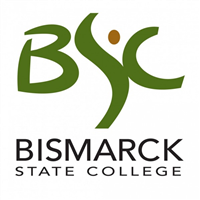What do they do?
Apply electrical and electronic theory and related knowledge, usually under the direction of engineering staff, to design, build, repair, adjust, and modify electrical components, circuitry, controls, and machinery for subsequent evaluation and use by engineering staff in making engineering design decisions.
Also known as:
Communications Technologist, Electrical Engineering Technician, Electrical Technician, Electronics Engineering Technician, Electronics Technician, Engineering Technician (Engineering Tech), Engineering Technologist, System Technologist, Technologist
-
0.9%
Change
Ranks #45 in job growth rate220Job Openings
Ranks #21 in net job growth
Colleges with the most graduates that become Electrical and Electronic Engineering Technologists and Technicians
Looking for colleges that offer a specific major? Use the College Match Tool to find your best-matched schools and discover your estimated Net Price!
- Some college, no degree (30%)
- Associate's degree (30%)
- High school diploma equivalent (18%)
- Bachelor's degree (16%)
- Less than high school diploma (3%)
- Master's degree (2%)
- Doctorate or Professional Degree (<1%)
Most Popular Majors that prepare Electrical and Electronic Engineering Technologists and Technicians
-
#1
-
Degrees Granted
475
-
Female Students
32
-
Male Students
443
-
Median Starting Salary
$57,600
-
-
#2
-
Degrees Granted
402
-
Female Students
44
-
Male Students
358
-
Median Starting Salary
$56,989
-
-
#3
-
Degrees Granted
66
-
Female Students
7
-
Male Students
59
-
Median Starting Salary
$59,900
-
People in this career often have these skills:
- Critical Thinking - Using logic and reasoning to identify the strengths and weaknesses of alternative solutions, conclusions, or approaches to problems.
- Reading Comprehension - Understanding written sentences and paragraphs in work-related documents.
- Complex Problem Solving - Identifying complex problems and reviewing related information to develop and evaluate options and implement solutions.
- Active Listening - Giving full attention to what other people are saying, taking time to understand the points being made, asking questions as appropriate, and not interrupting at inappropriate times.
People in this career often know a lot about:
- Computers and Electronics - Knowledge of circuit boards, processors, chips, electronic equipment, and computer hardware and software, including applications and programming.
- Engineering and Technology - Knowledge of the practical application of engineering science and technology. This includes applying principles, techniques, procedures, and equipment to the design and production of various goods and services.
- English Language - Knowledge of the structure and content of the English language including the meaning and spelling of words, rules of composition, and grammar.
- Design - Knowledge of design techniques, tools, and principles involved in production of precision technical plans, blueprints, drawings, and models.
- Mathematics - Knowledge of arithmetic, algebra, geometry, calculus, statistics, and their applications.
People in this career often have talent in:
- Problem Sensitivity - The ability to tell when something is wrong or is likely to go wrong. It does not involve solving the problem, only recognizing that there is a problem.
- Near Vision - The ability to see details at close range (within a few feet of the observer).
- Deductive Reasoning - The ability to apply general rules to specific problems to produce answers that make sense.
- Written Comprehension - The ability to read and understand information and ideas presented in writing.
- Inductive Reasoning - The ability to combine pieces of information to form general rules or conclusions (includes finding a relationship among seemingly unrelated events).
- Oral Comprehension - The ability to listen to and understand information and ideas presented through spoken words and sentences.
- Oral Expression - The ability to communicate information and ideas in speaking so others will understand.
- Information Ordering - The ability to arrange things or actions in a certain order or pattern according to a specific rule or set of rules (e.g., patterns of numbers, letters, words, pictures, mathematical operations).
People in this career often do these activities:
- Maintain electronic equipment.
- Test performance of electrical, electronic, mechanical, or integrated systems or equipment.
- Install instrumentation or electronic equipment or systems.
- Review technical documents to plan work.
- Confer with other personnel to resolve design or operational problems.
- Resolve operational performance problems.
- Create electrical schematics.
- Assemble equipment or components.
- Evaluate designs or specifications to ensure quality.
- Interpret design or operational test results.
- Maintain operational records or records systems.
- Select tools, equipment, or technologies for use in operations or projects.
- Estimate operational costs.
- Estimate technical or resource requirements for development or production projects.
- Prepare project budgets.
- Train personnel on proper operational procedures.
- Direct installation activities.
- Direct industrial production activities.
- Document technical design details.
- Design electrical equipment or systems.
- Operate computer systems.
- Purchase materials, equipment, or other resources.
- Update technical knowledge.
- Advise customers on the use of products or services.
- Direct quality control activities.
- Create schematic drawings for electronics.
This page includes data from:

 Occupation statistics: USDOL U.S. Bureau of Labor Statistics Occupational Employment Statistics
Occupation statistics: USDOL U.S. Bureau of Labor Statistics Occupational Employment Statistics
 Videos: CareerOneStop, USDOL/ETA and the Minnesota Department of Employment & Economic Development
Videos: CareerOneStop, USDOL/ETA and the Minnesota Department of Employment & Economic Development













